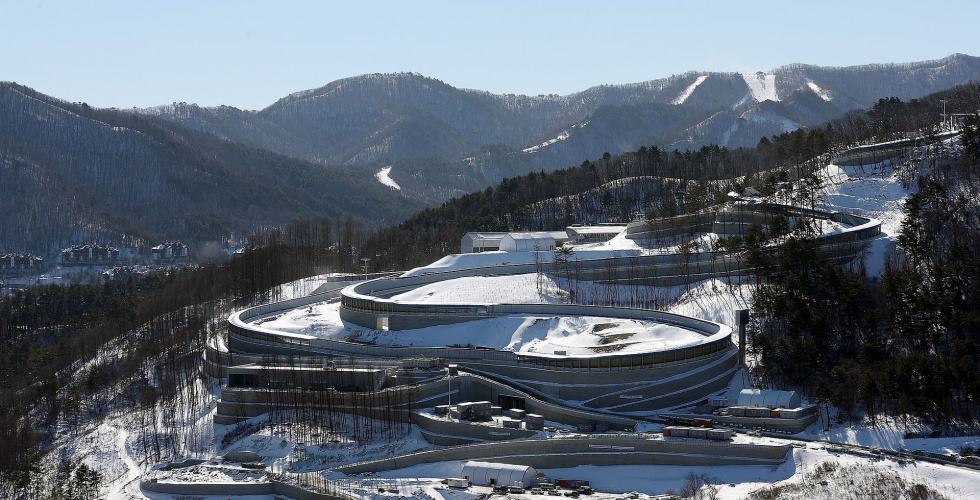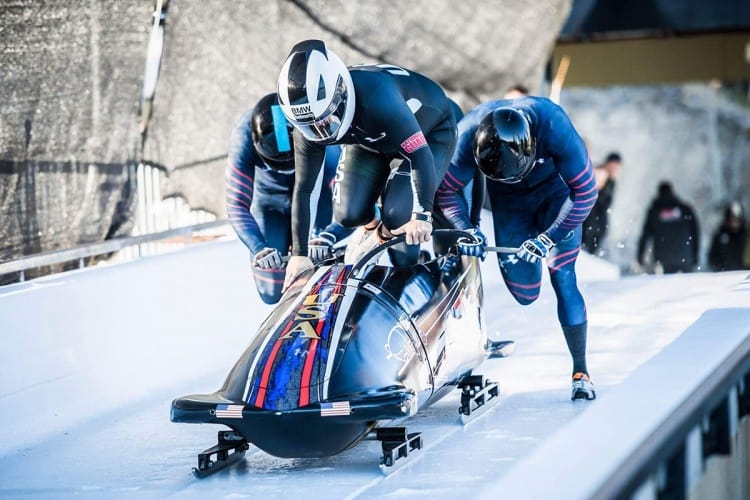
The Alpensia Sliding Centre in Pyeongchang that will host the bobsled and luge events at the 2018 Winter Olympics (Credit: Republic of Korea)
Work carried out by Purdue University researchers found that using high molecular weight polyethylene covered in a fine mist of water mimicked the performance of ice almost exactly.
The plastic is widely used as a low-friction material in artificial hip joints and as the bottom layer of racing skis. Conducted in collaboration with the international bobsled and luge federations, the three-year study noted that replacing ice with the plastic could also bring a number of environmental and cost benefits.
“These are enormously costly facilities, and some of them don’t have many people using it,” said Jan-Anders Mansson, a professor in materials and chemical engineering, and director of Purdue’s Composites Manufacturing and Simulation Centre. “So, they’re built for the Olympics and then they stand rather unused.”
According to Mansson, the bobsled track for the 2006 Turin Olympics cost about $100m to build and requires another $1m annually to maintain. Conversely, the cost of building a plastic track is estimated at about $4-5m, with its environmental impact reduced by up to 70 per cent.

(Credit: USA Bobsled Skeleton Federation)
The low-friction, low-wear plastic not only simulates the feel of ice, it also matches its speed profile, allowing sleds to reach speeds of 100km/h in just 600m. Over 1,000 bobsled runs, the study found that the polyethylene didn’t deteriorate significantly, sustaining only minimal damage that would not affect competition.
“When a sled passes, yes, it makes a microgroove, but then the polymer heals very quickly,” Mansson said. “We were so surprised that it worked so well like this in every category.”
In comparison to other winter sports such as speed skating, ice hockey and curling, using plastic for a bobsled run makes more sense, as less direct ‘feel’ is required and the potential savings are much greater. Furthermore, plastic tracks could potentially be used all year round and located close to centres of population, unlike traditional sliding centres, which are often situated in remote locations requiring bespoke transport links.
The modular tracks could also be separated into 22 sections, allowing temporary set ups to be fabricated in and around towns and cities. By making the sport more accessible, Mansson believes its popularity could flourish.
“The goal for any sport is to get kids in there and they start to compete, and the interest grows,” he said. “If you do this not with ice but with plastic that has the same properties, you can have summer bobsledding, family bobsledding and even large events in warm countries.”
“If they can run Formula 1 races in downtown Monaco, this would not be rocket science.”




Red Bull makes hydrogen fuel cell play with AVL
Formula 1 is an anachronistic anomaly where its only cutting edge is in engine development. The rules prohibit any real innovation and there would be...